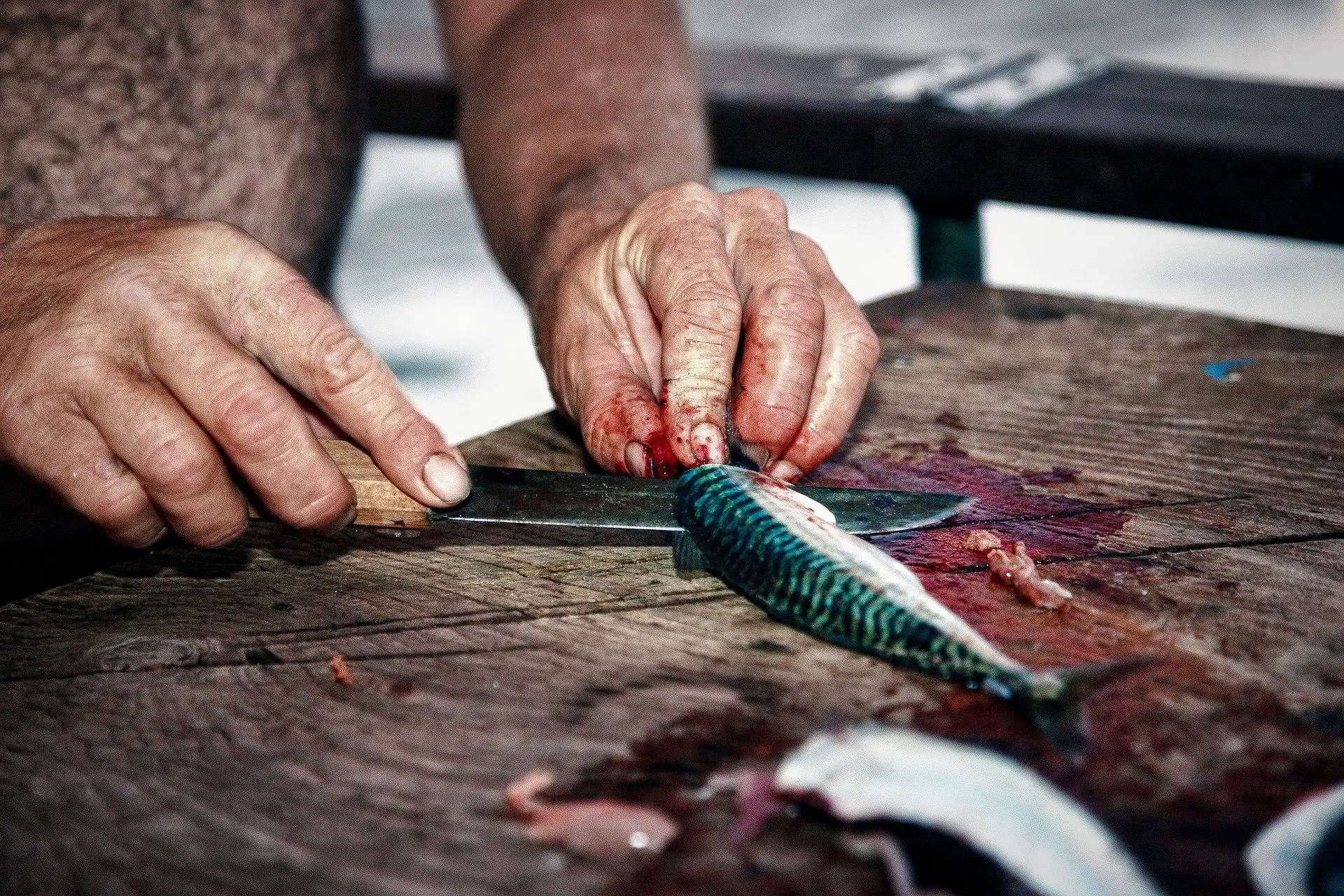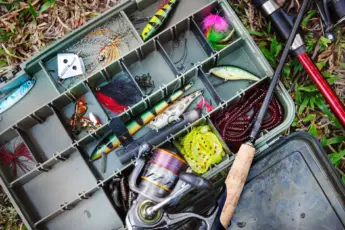Saltwater and freshwater fishing is a popular sport in Georgia, South Carolina, and North Carolina. Anglers have the opportunity to catch a wide range of species. Fish that have been caught are cleaned to create a meal or cut and used as bait. During cleaning or chopping bait chunks, the person handling the knife encounters fish guts. The guts of fish can be messy but can’t be avoided. Here is what you need to know about fish guts.
What Are Fish Guts
The belly section of a fish between the back of the lower portion of the gills to the tail contains vital organs. To put it simply, this is the area of the fish where the innards are found.
The guts refer to the heart, spleen, liver, gallbladder, intestine, stomach, urinary bladder, swim bladder, and reproductive organ. Without guts, the fish would not be alive.
Can You Eat Fish With Guts
Guts are a vital component of sustaining life for fish; however, it is not recommended to cook the fish with innards intact or eat the innards.
When preparing fish to cook whole or filleted, remove the interior organs by cutting the belly open from the head to the anal fin. The cut allows you the opportunity to pull the innards free by reaching and removing them by hand. Discard the guts after removal as they should not be cooked and consumed.
There are two concerns with eating fish guts. Whatever you do, discard the innards and avoid consumption.
Toxins
The first reason is that the innards contain a high level of toxins compared to the flesh. To reduce the intake of toxins, including mercury, never consume fish organs.
Toxins accumulate in the fish’s skin, internal organs, and fatty areas. Throw away this portion of the fish.
Foul Taste
As if the risk of ingesting toxins isn’t enough to prevent consuming fish guts, the taste is repulsive. Remove the innards from the fish before cooking to avoid the unpleasant flavor from tainting the fillets.
Also, never remove and cook the guts separate from the fish for consumption. Again, remove and throw the innards away.
What Should I Do With Fish Guts
Always discard the body of the fish and guts properly after filleting. Utilize dockside cleaning tables, as blood and scales are rinsed into the water. Cleaning fish in the house is more challenging.
Dockside Filleting
When filleting redfish or other fish dockside, simply toss the body and the innards into the water. In saltwater environments, crabs and fish will quickly devour the scraps. However, never throw the fish in shallow water where they can be seen or left above water generating a foul odor.
Kitchen Filleting
Filleting fish is a messy business so contain the scales, guts, and blood as much as possible. The disposal of carcasses and innards is more challenging at home. We recommend bagging the guts and body and placing them in a cooler with ice. Transport the bag to a coastal region or lake and dispose of the scraps.
Fish bodies and innards will leave the trash cans with a foul smell and attract varments, including raccoons.
Is It OK To Throw Fish Guts In The Water
While yes, it is ok to dump fish guts in the water, avoid dropping them in high visibility areas. Toss the scraps in deep sections away from dry land. Sealife, including turtles, fish, crabs, and other creatures, will feed on the remaining portions of the fish.
What Do You Do With Fish Guts In Backcountry
Never leave guts in your immediate vicinity when out in the wilderness camping or adventuring for the day. The smell of the innards and carcasses attracts animals, including bears, which put human life at risk.
Like discarding guts after a day of fishing before returning to the house at a dockside fillet table, toss the scraps into the water. There is no sense in putting you, your friends, and your family at risk of attracting dangerous wildlife.
How Do You Remove Fish Gut Stains From Clothing
One of the most critical pieces of information when removing fish gut stains from clothing is avoiding hot water. Hot water sets the stains making them more challenging to pull from shirts, hats, gloves, pants, and more.
After a day of fishing, immediately apply stain remover and scrub the affected area. Wash the clothing on cold with detergent, allow to dry, and inspect. In the event the stain is still present, repeat the process.
Stains are challenging to remove and therefore some remain permanent. The best method to prevent stains is by wearing a nylon waterproof apron above your clothes. Clean and stow the apron after use.
We suggest the waterproof heavy-duty nylon apron which is available for purchase on Amazon to prevent fish guts stains.
Now You Know About Fish Guts
Part of the process of cleaning fishing is dealing with the guts. The innards are unappetizing and harmful and must be thrown away before cooking fish whole. We recommended wearing an apron or other covering to prevent clothes from becoming stained during the process of cleaning.






